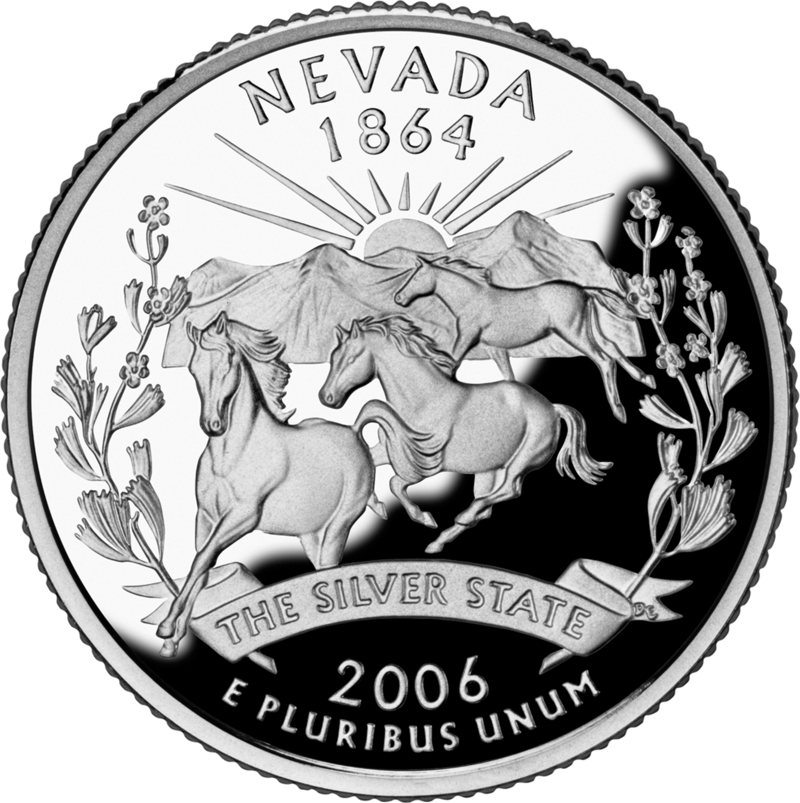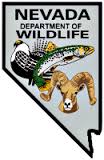A totally unexpected event happened as I turned a corner on the Fort
Churchill road about 5 to 6 miles in from the intersection of the US 50 and
the Fort Churchill road.
Horses! But not your everyday carnival pony for
kids or those apple eating tame geldings in so many country backyards. These
are MUSTANGS! And we are not talking about those rubber tired metal cages
from Ford.
Video Note: After opening this page you hear audio sounds it could be your
browser auto playing the video at the end of the page! You can either wait
for the short video to end or just plug your ears or go to this page and
learn ho to stop video from autoloading this might also help with those
pesky sidebar videos on many web pages!
https://www.maketecheasier.com/disable-video-autoplay-firefox-chrome/
Nevada has played host to Mustang herds since the early 1500's when some of
the Conquistadors ponies escaped and the wild version of these Spanish
horses soon populated the western USA from Texas to California up to Idaho.
By the 1970's the once massive herds had dwindled to a few 10,000 due to
loss of habitat, hunting, poisoning and other lame, stupid human efforts.
In the 1970's the BLM and state fish & game agencies started to correct this
problem. Although at the same time we must remember that wild horses are NOT
native to America and can be destructive on the environment if the herds are
allowed to grow into massive numbers.
I found it rather odd at first that this herd (Band seems to be the
correct term) was not only close to major highways and civilization but not
the least bothered by my vehicle! Maybe these equines thought my white
vehicle was nothing more than a boulder that had an excessive amount of bird
droppings on it.
This was not a large band but from my count it band numbered around 25 Mustangs. The band was
walking along a path that was just a few feet to the North or left of the
road. Heading south unless my directional sense has become as untrustworthy
as my aging sense of smell! As I was snapping a few photos I also
wanted to get a video of the band walking on the obviously rocky path as it
made a excellent sound. Well just like my sense of smell that always fails
me when experimental cooking is brought forth, my brain cells had a mini
melt down and for a couple of micro seconds I could not remember how to make
the bloody camera take video.
I am not trying to be funny here but I sure felt like a couple of equines up
the hill were laughing at me as they slowly moved further down the rocky
path. This was especially true when one Mustang look directly at me. I think
his name is Brutus! And when he looked directly at me and I am sure I heard a
despairing remark.
After a few seconds in the much cooler vehicle my cranium began to send
electrical signals again to my hand and eyes and boomshaka, I remembered
how to shoot video. Stepping out of my vehicle feeling and retrieving my
nerve, I went through the now simple process of shooting a video. I was not about to let a wild equine stare me down and ruin my photo
op!
Here on the left photo you can see between the single and double
power/telephone poles the Mustangs heading along the rocky hill. There is a
path that they are using and that path is just between where the hill is
solid rock and the desert vegetation (Sagebrush, Indian ricegrass, some
cheat grass, maybe some Sandberg bluegrass (AKA Nevada bluegrass)) covered
soil zone. This band I believe is probably part of the Pine Nut
Mountains Herd Management Area (HMA). Although if you look at the
Map of Pine Nut Mountains
HMA provided by the BLM, aka Bureau of Land Management (one agency in
the Dept. of Interior) you will see that the HMA (Horse Management Area) is
well to the West or Southwest of where I saw this Mustang band. But remember
these are "wild" horses and by that term the Mustangs do not self regulate
themselves into any zone!
Just a pea size bit of common sense will give you the understanding that the
Mustangs were following this path as it would lead the band down across the
road and to a place to cross the road and get to the waters of the Carson
River. From what I have read online is that in the summer and fall seasons
the only open source of water for the Mustangs is the Carson River. The Pine
Nut mountains do not offer much in the way of streams or ponds.
A quick note on the use of the term Mustang and wild or free-roaming horse.
The original "Mustang" horse was a escapee from the Colonial Spanish
horses and therefore a feral horse from domesticated stock. Some quick
background on the Mustang breed from Wikipedia:
The mustang of the modern west has several different breeding
populations today which are genetically isolated from one another and
thus have distinct traits traceable to particular herds. Genetic
contributions to today's free-roaming mustang herds include assorted
ranch horses that escaped to or were turned out on the public lands, and
estray horses used by the United States Cavalry. For example, in Idaho
some Herd Management Areas (HMA) contain animals with known descent from
Thoroughbred and Quarter Horse stallions turned out with feral herds.
The herds located in two HMAs in central Nevada produce Curly Horses.
Others, such as certain bands in Wyoming, have characteristics
consistent with gaited horse breeds.
Several bands have had DNA testing and are verified to have significant
Spanish ancestry. These include the Kiger Mustang, the Cerbat Mustang,
and the Pryor Mountain Mustang. Horses in several other HMAs retain
Spanish horse traits, such as dun coloration and primitive markings.
Other genetic herd studies, such as one done in 2002 on the bands in the
Challis, Idaho area, show a very mixed blend of Spanish, North American
gaited horse, draft horse and pony influences. A 2010 study of the Pryor
herd also showed that those mustangs shared genetic traits with other
domestic horse breeds, presenting strong evidence that modern "wild"
horses were not descended from a prehistoric subspecies that had
survived in North America from prehistoric times.

Ok, finished with school. Moving on to the Carson River Valley Mustangs. The
state of Nevada is spot on when it comes to wild horses or Mustangs. Over
half of all the remaining Mustang horses in the wild or in the state of
Nevada. Obviously one reason is the Federal Government and through it land
management arm (BLM) administers about 47.5 million acres of Nevada land. A
pile of statistic follow:
Nevada contains a total of 70,264,320 acres. Of these, the federal
government owns 56,961,778 acres, or 81.1 percent of the state. That leaves
only 13,302,542, or 18.9 percent of the state for owners other than the
federal government. The Bureau of Land Management (BLM) administers 47.5
million acres of public land in Nevada. BLM public lands make up about 63
percent of Nevada's land base. The difference between the 57 million acres
owned by the feds and the 47.5 million acres administered by the BL is large
tracts of land in Nevada used and owned by the Military and DOE.
That is the major reason Nevada is host to more Mustangs than any other
state. Currently BLM thinking is that roughly 26,000 individuals (meaning
horses and burros) is a manageable number, but as of February 2010 the feral
mustang population was well over that number being estimated at 33,700
horses and 4,700 burros. Considering the acreage numbers given above, you
can easily guess the reason why more than half of all mustangs found in
North America are hanging out in Nevada.
Ok seriously folks back to the Mustangs.
On the right is the same photo as on the top of the page but using my
telephoto lens. You can see the paths marked in the grass by the constant traveling back
and forth of the Mustang band between forage areas and water from the Carson
river.
No longer fearing Brutus and his stare down technique I promptly encased
myself in my 90 horsepower SUV thingy and drove down the road to get ahead
of the mustangs. But to my aghast Brutus's buddies had already learned the
same stare down technique and gave me a triple Mustang stare down!
Well heck, about now I feel totally like a rock star as the entire band of
Mustangs are staring at me. I am now the center of attention! Notice the
condition of the mane on each of the horses. No human is trimming and
combing these manes. Hippie horses need no barbers!
Next I will show you the approximate location and direction of the photos.
Remember this is the Fort Churchill road going in a roughly West to East
direction and slightly south at times. It is a dirt road following the
course of the Carson River. This band of Mustang horses has probably been
using this same set of pathways for decades.
The above map is an approximate location and not to be considered as an
exact location. Next check out the Satellite images that show the horse
tracks from outer space. Captain Kirk tell Mr. Spock we have the satellite imagery
thing covered!
Using the satellite image on the left I was able to get an approximate
location by finding the single and double power/telephone poles that can be
seen in the top of page photo and the above left photo. The satellite image
on the right shows the horse trail or path and also how it crosses the road
and leads down to the Carson River on a sand bar. The slope is gentle
enough for even the foals we see in the following photos to manage and get
to the water. Interesting!
The Mustang Stare. Notice the varied coloration of these horses and even the
white Mustang in the right back. To give you the reader a better idea of how
a Mustang horse differs from the usual American domesticated horse we head
back for another Wikipedia paragraph:
The now-defunct American Mustang Association developed a breed standard
for those mustangs that carry morphological traits associated with the
early Spanish horses. These include a well-proportioned body with a
clean, refined head with wide forehead and small muzzle. The facial
profile may be straight or slightly convex. Withers are moderate in
height and the shoulder is to be "long and sloping." The standard
considers a very short back, deep girth and muscular coupling over the
loins as desirable. The croup is rounded, neither too flat nor
goose-rumped. The tail is low-set. The legs are to be straight and
sound. Hooves are round and dense. Dun color and primitive markings are
particularly common amongst horses of Spanish type. Height varies across
the west, but most are small, generally 14 to 15 hands (56 to 60 inches,
142 to 152 cm), and not taller than 16 hands (64 inches, 163 cm), even
in herds with draft or Thoroughbred ancestry.
This herd or band was defiantly following a leader or "numero una stallion"
leading the band.
The above right photo was the last I took as I did not
want to disturb or harass the horses any further and I also wanted to get
down to Fort Churchill before the moon showed up! And yes I actually did get
a video shot of the band walking down the path.
Video note! If you are still using IE (i.e. Internet Exploder) and are having
issue playing this video please try using Firefox, Chrome and Safari.


